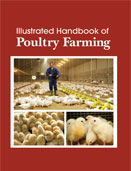Handbooks

A poultry farm is where domesticated birds are raised. Poultry include chickens, turkey, ducks, and geese. These animals are raised for their meat and eggs. Chickens are the most common bird raised for both meat and eggs. Chickens that are raised for their meat are called broilers. Chickens that are raised for their eggs are called laying hens or layers. This illustrated handbook focuses on the practice of raising poultry, such as chickens, turkeys, ducks, and geese, as a subcategory of animal husbandry, for the purpose of farming meat or eggs for food.
Poultry farming means ?raising various types of domesticated birds such as chickens, ducks, turkeys and geese for the purpose of farming meat or eggs for food. Poultry are farmed in great numbers with chickens being the most numerous. Poultry provide humans with companionship, food and fiber in the form of eggs, meat and feathers. Many people love to raise and show chickens and other poultry species at fairs and other poultry shows. Others just love to raise them for backyard pets and for fresh eggs every day. There is a large commercial chicken industry that provides us with eggs and meat.
Illustrated Handbook of Poultry Farming covers the poultry housing requirements, poultry breeding, housing & equipment, feed formultaions, disease prevention, to assure maximum performance. As can be seen, the poultry industry is a large business. A carefully controlled environment that avoids crowding, chilling, overheating, or frightening is almost universal in poultry farming. Cannibalism, which expresses itself as toe picking, feather picking, and tail picking, is controlled by debeaking at one day of age and by other management practices. The feeding, watering, egg gathering, and cleaning operations are highly mechanized. Birds are usually housed in wire cages with two or three animals per cage, depending on the species and breed, and three or four tiers of cages superposed to save space. Cages for egg-laying birds have been found to increase production, lower mortality, reduce cannibalism, lower feeding requirements, reduce diseases and parasites, improve culling, and reduce both space and labor requirements. The interest in poultry and poultry products have grown tremendously in the last 20 years. Almost every country in the world has a poultry industry of some kind. Japan is steadily increasing their domestic production of both broilers and egg producing birds. Countries of the former Soviet Union have always been producing poultry and eggs and are continuing to increase their output to meet the new demand. China, the Middle East, and Africa are all areas where increasing demand for poultry has resulted in significant increases in the number of chickens being reared for meat and eggs. This Handbook has been designed primarily for the use of students and researchers engaged in poultry courses dealing with production, management, breeding, nutrition, anatomy and physiology, processing and diseases.